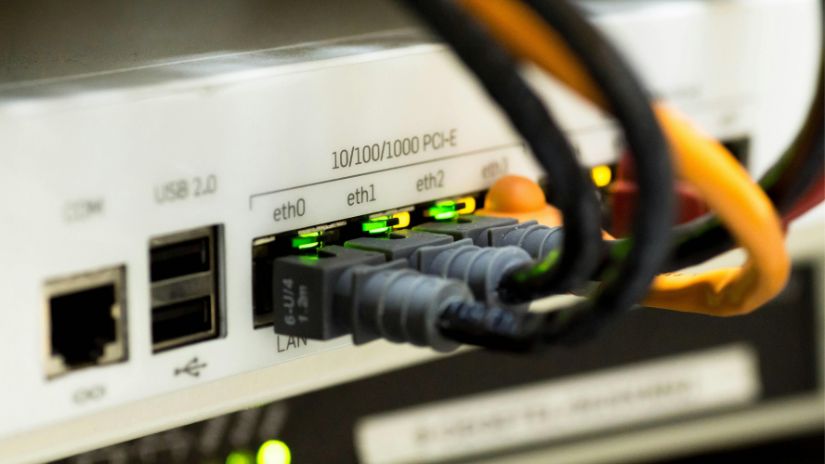- Did you know that not all modems are NBN compatible?
- Understanding what you need to connect to the NBN will help with a smoother setup.
- Learn about NBN compatible modems

The NBN is Australia's most common household Internet connection, but you might be wondering: what modem do I need for NBN, and is my modem NBN compatible?
While the NBN rollout is complete, some homes may still need to upgrade their equipment to fully benefit from the network's potential.
If you're looking to save on your NBN plan, consider BYO modem offers, but ensure your modem is NBN compatible before making the switch.
Are all modems NBN compatible?
Not all modems are compatible with the NBN's newer technology and improved capabilities, so you may need to upgrade your hardware.
For most NBN connections, you'll need a modem labelled as ADSL2+, VDSL, or VDSL2, which is typically indicated on the back of the modem.
For certain connection types like NBN Wireless or FTTP, you'll also need a modem with an Ethernet WAN port.
Providers often offer a modem with your NBN plan, or you can look for a modem/router with a 'NBN Ready' sticker or check NBN Co's website for compatible devices.
Using your current modem
Modems enable Internet connectivity, while routers broadcast the Wi-Fi signal for devices to use, essentially guiding your devices to the modem where data is decoded.
A modem-router combines both functions. If you're unsure about what you need, refer to our guide on modems versus routers.
There are several instances wherein you can continue using your existing modem. Those who currently have a very high bit-rate digital subscriber line (VDSL) modem looking to upgrade from asymmetric digital subscriber line (ADSL) to Fibre to the Network (FTTN) or Fibre to the Building (FTTB) can continue using their existing router.
Those switching between NBN broadband plans within the same address can continue using their current router. If you are only putting a data-only SIM from a new provider in an unlocked pocket Wi-Fi or Internet dongle, then your existing modem should work fine.
Got the right modem and need a new plan?
You may already have an NBN compatible modem, and if that’s the case and you’re not happy with your plan, then you need to take a look at our list of popular NBN plans below:
Once you decide which plan you’re interested in, call our Compare Broadband team and we can help you to get connected.
Types of NBN compatible modems
To determine the type of NBN modem you need, consider the type of NBN connection you have:
- FTTP: You'll need a VDSL2 modem with an Ethernet WAN port.
- FTTC: A VDSL2 modem with an Ethernet WAN port is required.
- FTTB: A VDSL2 modem with an Ethernet WAN port is needed.
- FTTN: A VDSL2 modem with an Ethernet WAN port is necessary.
- HFC: An NBN-compliant DOCSIS 3.0 modem is required.
- Fixed Wireless: A modem/router that supports NBN's UNI-D ports is needed.
- Sky Muster Satellite: A modem/router compatible with NBN's satellite service is required.
Always check with your service provider for specific compatibility requirements and recommendations.
The speed and reliability of your Internet can depend on your modem, especially if you've subscribed to a fast plan. In larger households with high Internet demands, a modem with advanced features like dual-band technology or extended Wi-Fi range may be necessary.
Additionally, consider the standard of the modem, indicated by the letter at the end of the number pattern '802.11'. For high-performance needs, look for a model with '802.11be', which is considered the highest standard.
NBN compatible modems
To learn which modems are best to choose, you need to know which brands are available where you are. Most telcos in Australia can offer you a range of options and some popular options include:
- Netgear: Known for its reliable and high-performance modems, Netgear offers a range of NBN-compatible devices suitable for different connection types.
- TP-Link: TP-Link is another reputable brand that offers NBN-compatible modems with features like dual-band technology and easy setup.
- D-Link: D-Link modems have been recognised for its user-friendly interfaces and solid performance, making them a good choice for NBN connections.
- ASUS: ASUS modems are highly regarded for its quality and performance. It offers a range of NBN-compatible modems with advanced features for power users.
- Linksys: Linksys offers NBN-compatible modems that are reliable, with fast speeds, making them a good choice for heavy Internet users.
- Billion: Billion modems offer robust build quality and advanced features. It offers a range of NBN-compatible modems suitable for different needs.
- Huawei: Huawei modems are known for its innovative features and high-speed performance. It offers NBN-compatible modems with advanced technologies like 5G connectivity.
When choosing a modem, it's important to consider your specific NBN connection type and speed requirements to ensure compatibility and optimal performance. You can buy an NBN-compatible modem from third-party retailers like electronics stores.
Some NBN providers also offer modems for purchase without requiring you to sign up for an NBN plan. However, many providers include a modem with your NBN plan, making it more convenient for some to get a new modem when they sign up for the NBN.
When to upgrade your modem
If you've upgraded from ADSL to HFC, FTTC, FTTP, Fixed Wireless, or NBN Satellite, you'll need a new router. Switching to a wireless broadband plan will also require a new modem.
Moving to a new address with a different NBN connection technology available will also necessitate a modem change. Some telcos lock its modems, preventing use with a different provider, but this isn't always the case.
Always check with your current provider before deciding whether to keep your existing modem or upgrade.
What do NBN-compatible modems cost?
The cost of NBN-compatible modems can vary widely depending on the brand, features, and where you purchase them.
Generally, you can expect to pay anywhere from $300 to as high as $1500 for a premium modem compatible with the NBN. Entry-level modems with basic features may be on the lower end of the price range, while modems with advanced features like dual-band Wi-Fi, multiple Ethernet ports, and high-speed capabilities will typically cost more.
It's a good idea to compare prices from different retailers and consider your specific needs before purchasing a modem.
How do I set up an NBN-compatible modem?
Setting up an NBN-compatible modem is generally straightforward and involves the following steps:
- Unpack the modem: Remove the modem from its packaging and ensure all accessories are included.
- Connect the modem:
- Plug one end of the Ethernet cable into the modem's WAN (Wide Area Network) port.
- Plug the other end of the Ethernet cable into the NBN wall socket or NBN connection box.
- Power on the modem: Plug the modem's power adapter into an electrical outlet and connect it to the modem. Turn on the modem using the power button (if applicable).
- Wait for the modem to boot up: It may take a few minutes for the modem to start up and establish a connection to the NBN network.
- Configure the modem:
- Open a web browser on a connected device (e.g., computer, smartphone).
- Enter the modem's IP address in the browser's address bar (usually found on the modem's label or in the user manual).
- Follow the on-screen instructions to configure the modem. You may need to enter your NBN username and password (provided by your NBN service provider) and configure other settings such as wireless network name (SSID) and password.
- Connect devices to the modem:
- Once the modem is configured, you can connect your devices to the modem's wireless network using the SSID and password you set up earlier. Alternatively, you can connect devices to the modem using Ethernet cables.
- Test the connection:
- Check that your devices can access the Internet by browsing websites or using online services.
- Troubleshoot if necessary: If you encounter any issues during setup, refer to the modem's user manual or contact your NBN service provider for assistance.
Remember to keep your modem's firmware up to date and follow any additional setup instructions provided by your NBN service provider.
The takeaway
Before switching to the NBN, ensure your modem is compatible. If not, it's time to update. With the NBN, you'll access Australia's fastest, most reliable Internet.
Need help finding the best NBN plans in your area? Call our experts today for friendly advice. We're here to answer your questions.





